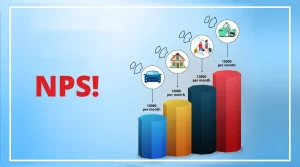New Delhi:
On August 24, the central government introduced the Unified Pension Scheme (UPS) for employees, responding to long-standing demands for guaranteed pension income after retirement.
The UPS is designed to benefit those already enrolled in the New Pension System (NPS), including retired NPS subscribers.
However, the key question remains: should you switch from NPS to UPS?
Should You Make the Switch?
Experts suggest that the decision to switch from NPS to UPS should align with your financial goals.
Some employees may prefer the potential high returns of the stock market, while others might value the security of a guaranteed pension.
Dhirendra Kumar, CEO of Value Research, advises that if you have faith in India’s economic growth and are still many years away from retirement, staying with NPS could be more advantageous.
NPS has the potential to yield high returns, especially if you are familiar with the stock market and have 10-20 years left until retirement.
The Appeal of Guaranteed Pension Income
The guaranteed income offered by UPS is its biggest draw, according to Suresh Sadagopan, CEO of Ladder7Wealth Planners.
The government has assured that employees under UPS will receive a pension equal to 50% of their average basic salary from the last 12 months of service.
This can be a substantial amount for many government employees.
NPS subscribers may find UPS appealing as it promises a pension sufficient to maintain their lifestyle post-retirement.
Comparing UPS with OPS and NPS
While UPS guarantees a pension, it differs from the Old Pension Scheme (OPS).
UPS is a fully funded scheme requiring employees to contribute 10% of their basic salary and DA, with the government contributing 18.5%.
This is higher than the 14% government contribution in NPS.
In contrast, OPS does not require employees to contribute, although they do invest in the General Provident Fund (GPF), which is paid out with interest upon retirement.
According to Preeti Chandrashekhar, India Business Leader at Mercer Consulting, in an inflation-linked scheme like UPS, the risk of fluctuating interest rates and longevity is reduced, as the government bears the responsibility.
Key Considerations Before Switching
UPS is a hybrid of defined benefit and defined contribution schemes, necessitating careful management of the pension corpus.
Both the government and employees will contribute to UPS, with 8.5% of the government’s 18.5% contribution allocated to a separate Guarantee Reserve Fund.
It’s important to note that once you opt for UPS, switching back to NPS is not allowed.
The government will provide further details on UPS, which will help employees make an informed decision.
Both current and new employees can choose between NPS and UPS, but once selected, the decision is final.

























